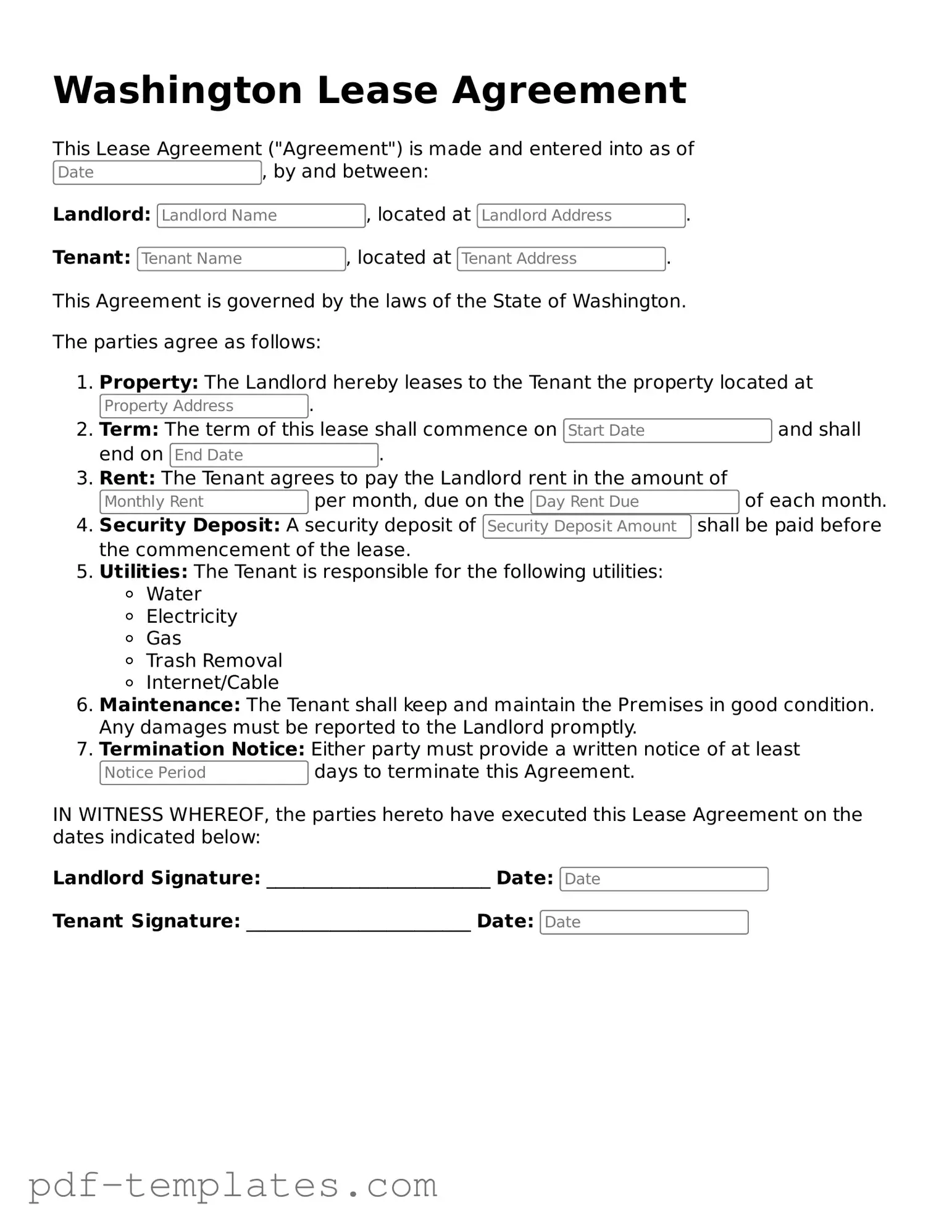The Washington Rental Agreement is similar to the Washington Lease Agreement in that both documents outline the terms under which a tenant can occupy a property. They specify the rent amount, duration of the tenancy, and responsibilities of both the landlord and tenant. While a lease typically covers a longer period, often a year, a rental agreement may be more flexible, allowing for month-to-month arrangements. Both documents serve to protect the rights of the parties involved and provide a clear framework for the rental relationship.
The Washington Sublease Agreement shares similarities with the Lease Agreement as it allows a tenant to rent out their leased property to another party. This document includes terms regarding the subtenant's rights and responsibilities, mirroring those found in the original lease. Like the Lease Agreement, it requires the landlord's approval and often stipulates that the original tenant remains responsible for the lease obligations. This ensures that all parties understand their roles and can help prevent disputes.
The Washington Commercial Lease Agreement is akin to the residential Lease Agreement, but it is tailored for business properties. It outlines the terms of renting commercial space, including rent, duration, and use of the property. Both agreements protect the rights of landlords and tenants, but the commercial version often includes additional clauses specific to business operations, such as maintenance responsibilities and zoning compliance. Understanding these differences is crucial for anyone entering into a commercial rental arrangement.
For a thorough understanding of the transaction process, consider reviewing the essential aspects of the Mobile Home Bill of Sale document, which can be found at this link.
The Washington Roommate Agreement is another document that resembles the Lease Agreement. It is designed for individuals sharing a rental property, outlining responsibilities related to rent payment, utilities, and common areas. While the Lease Agreement is a legal contract between a landlord and tenant, the Roommate Agreement focuses on the relationship between co-tenants. It helps to prevent misunderstandings and sets clear expectations, much like the Lease Agreement does for landlord-tenant relationships.
